Then and now: what the world's airports used to look like
Journey to the past
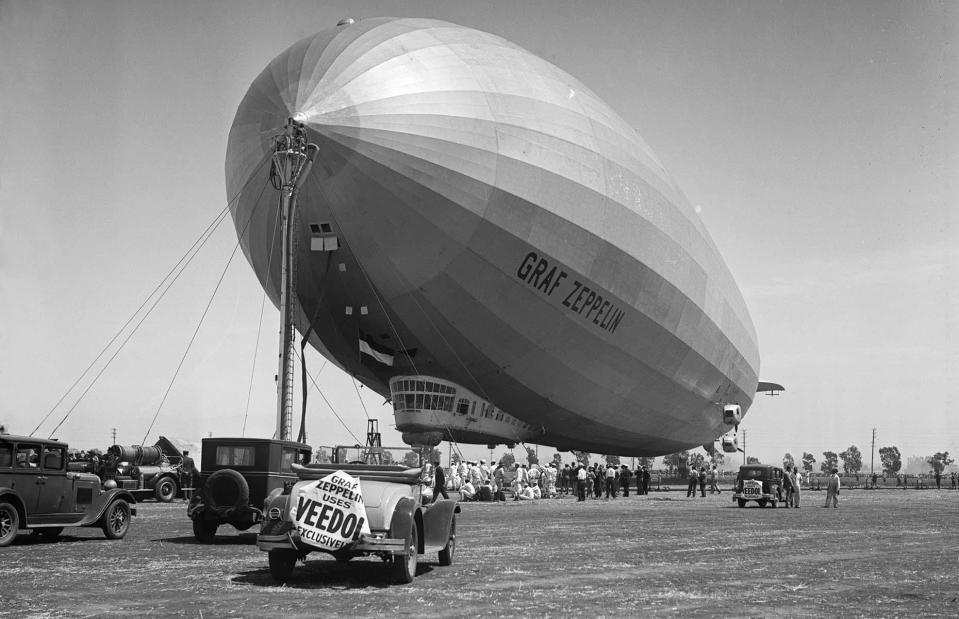
Camerique/Contributor/Getty Images
Any keen traveller will spend a fair amount of time in airports throughout their lifetime, but it has taken decades, and sometimes even over a century, for some of the busiest transport hubs to look the way they do. We take a trip down memory lane to trace the changes of some of the world's best-known airports.
Read on to see amazing historic photos that show how the world's most iconic airports once looked...
Amsterdam Airport Schiphol, the Netherlands
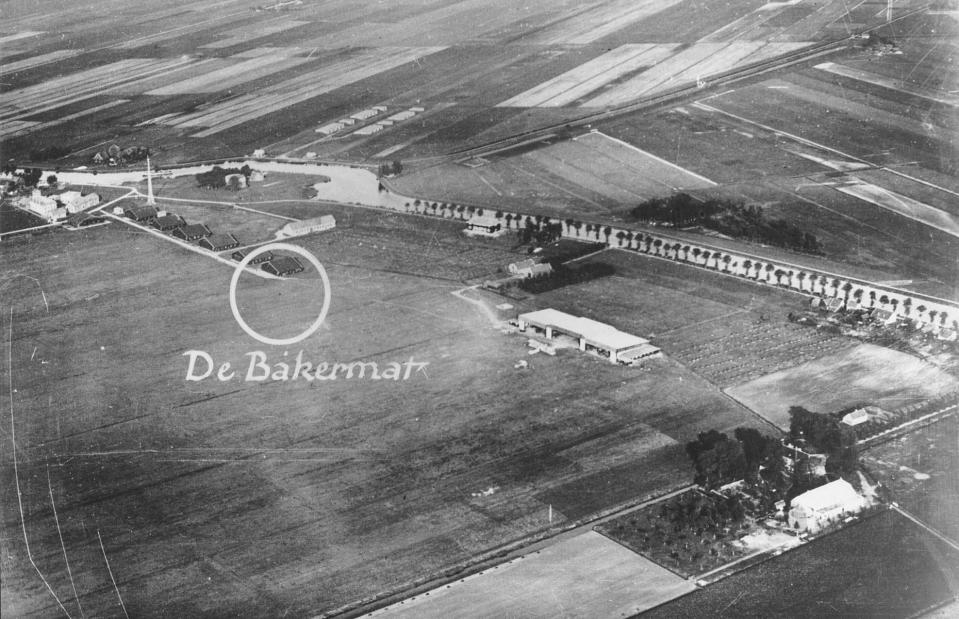
Amsterdam City Archives
One of Europe’s busiest airports, Amsterdam Airport Schiphol (AMS) was first established in 1916, and at that time was just a handful of small wooden structures on a stretch of muddy land, used as a military airfield. In 1920, the first scheduled KLM aircraft, carrying just two passengers, touched down at the airport. The airport expanded rapidly as the 1928 Amsterdam Olympics approached – the field and access roads were improved, a new concrete platform was poured and the first terminal and air traffic control tower were built.
Amsterdam Airport Schiphol, the Netherlands

R. Gates/Archive Photos/Getty Images
After Germany invaded the Netherlands, Schiphol became the most heavily defended German airfield in Europe. Because of its strategic importance it was virtually destroyed in 1943 by an American bombing raid – but, by the time the Second World War had ended, Schiphol was rebuilt and welcomed its first landing on 8 July 1945. During the 1950s it flourished as a tourist destination (pictured) and the first tax-free shops also opened here in 1957.
Amsterdam Airport Schiphol, the Netherlands
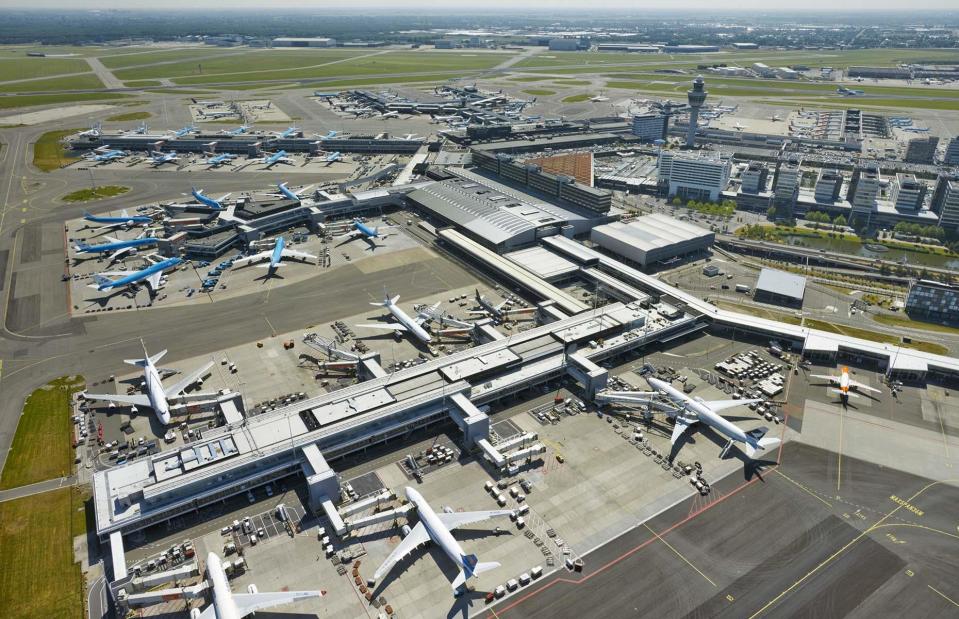
Courtesy of Schiphol
The airport continued to expand during the coming years until a new terminal was opened in 1967, and then again in 1975. A new air traffic control tower was also brought into use in 1991, becoming the tallest in the world at the time. Today, Schiphol is one of the world’s oldest international airports still in operation, offering 305 direct destinations from 120 airlines. Fun fact: Schiphol lies 13 feet (4m) below sea level at the bottom of what was once the Haarlemmer Lake.
London Heathrow, England, UK

Heathrow Airports Limited
London’s biggest airport, Heathrow (LHR), first came to be in 1930, when a British engineer paid £15,000 ($18,945) for a plot of land to build a private airport. Then called the Great West Aerodrome, the airport consisted of one grass runway and a collection of humble buildings. London Airport officially opened in 1946, and compared to the lavish lounges of today, passenger terminals were simple, consisting of ex-military marquees with no heating. There were, however, comforts such as floral armchairs, fresh flowers and a WHSmith (bookstore and newsagent).
London Heathrow, England, UK
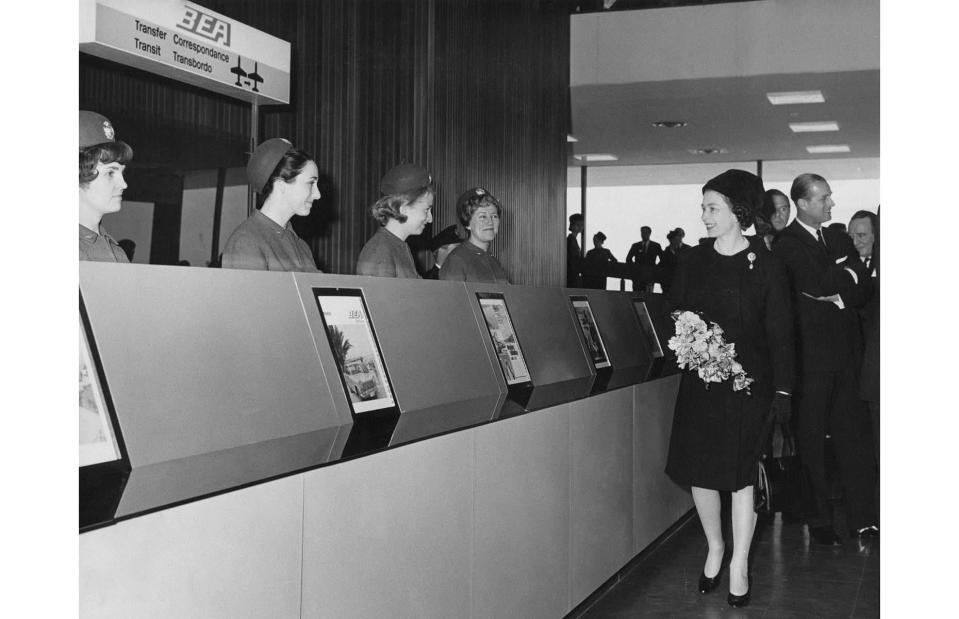
George W. Hales/Fox Photos/Hulton Archive/Getty Images
London Airport grew rapidly: 63,000 passengers travelled through the airport in its first year and the number rose to 796,000 in 1951. It was renamed Heathrow Airport in 1966, and by the end of the 1970s, when Concorde and Boeing 747 ruled the skies, 27 million passengers were using the airport annually. There was a constant stream of renovations in the coming decades to cope with the demand, with multiple terminals opened, a London Underground link created and a rail service launched. The late Queen Elizabeth II even visited to open Terminal 1 in 1969.
London Heathrow, England, UK

Anthony Charlton/LHR Airports Limited
Today, Heathrow is one of Europe's busiest airports by passenger traffic, serving 89 airlines flying to 214 destinations in 84 countries. In 2023, around 79.1 million passengers passed through the airport and 2024 is predicted to be its busiest-ever year, with New York (JFK) still its most popular destination. Those who have travelled through this airport in recent years might wonder where Terminal 1 disappeared to; after 47 years of service, it was closed in 2015 to make way for the expansion of Terminal 2 and is no longer in use. Currently, there are also controversial plans to build a third runway.
Frankfurt Airport, Germany
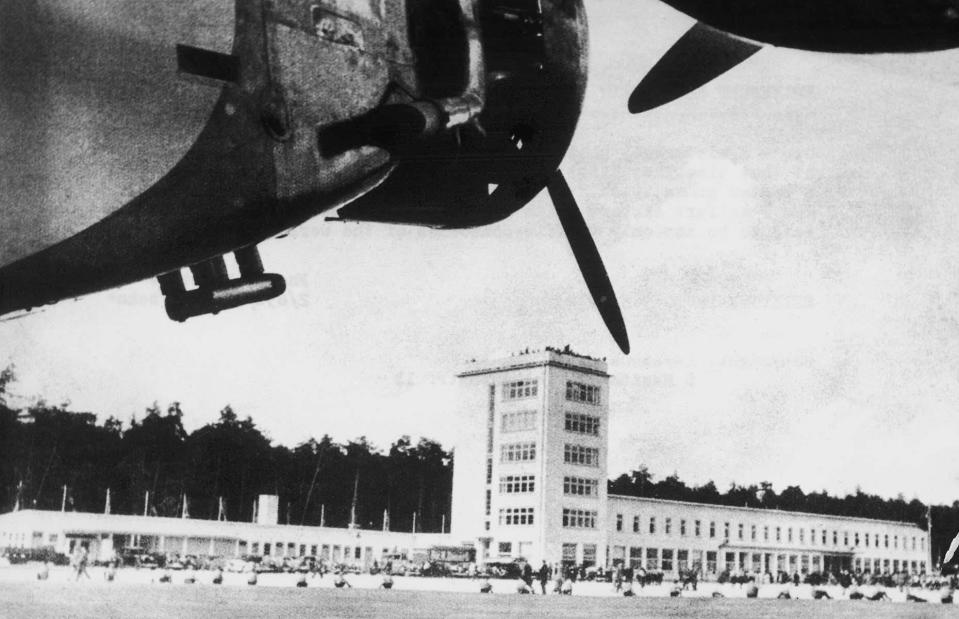
Keystone/Hulton Archive/Getty Images
Initially a hub for airships, including the ill-fated Hindenburg, the first traces of an airport at this location existed as early as 1912. Plans to construct an airport were revived in 1933 and three years later a commercial airport (pictured) opened and formed the core of what would become Frankfurt Airport (FRA). The airport was completely destroyed during the Second World War, but as soon as the US Army took control, a new temporary runway was built.
Frankfurt Airport, Germany
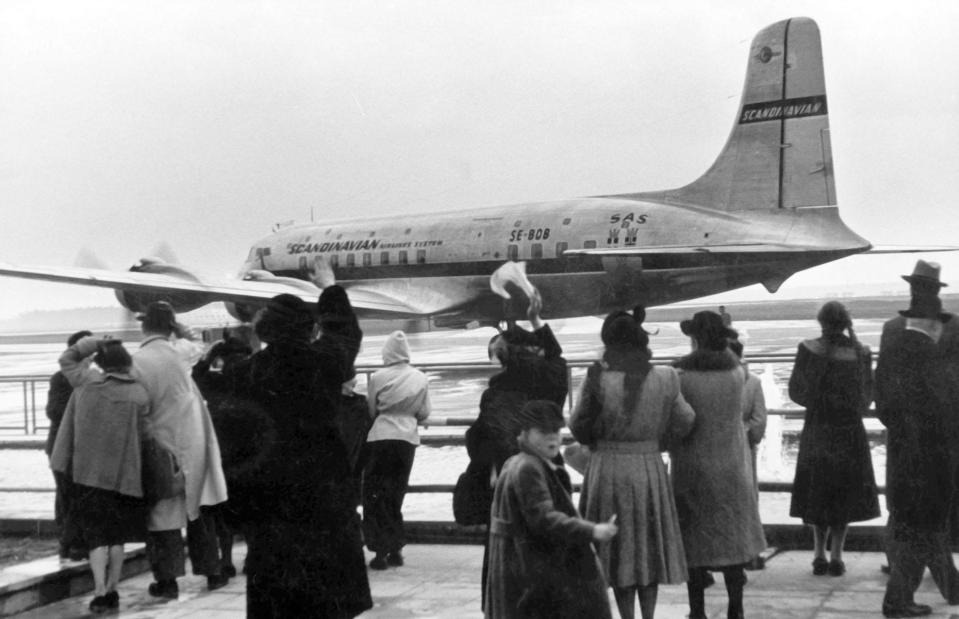
INTERFOTO/Alamy Stock Photo
Frankfurt Airport boomed in the 1950s after the restrictions for German air travellers were lifted, with more than 400,000 passengers flying just a year later. Frankfurt emerged as a major airline hub in 1958, when a new terminal opened and by 1962 there was already a need to build an even larger terminal. When Terminal 1 opened in 1972, the passenger offering improved, with restaurants and duty free shops catering to international travellers spending longer at the airport. Pictured here is a Scandinavian Airlines flight leaving the ramp in the early 1950s.
Frankfurt Airport, Germany
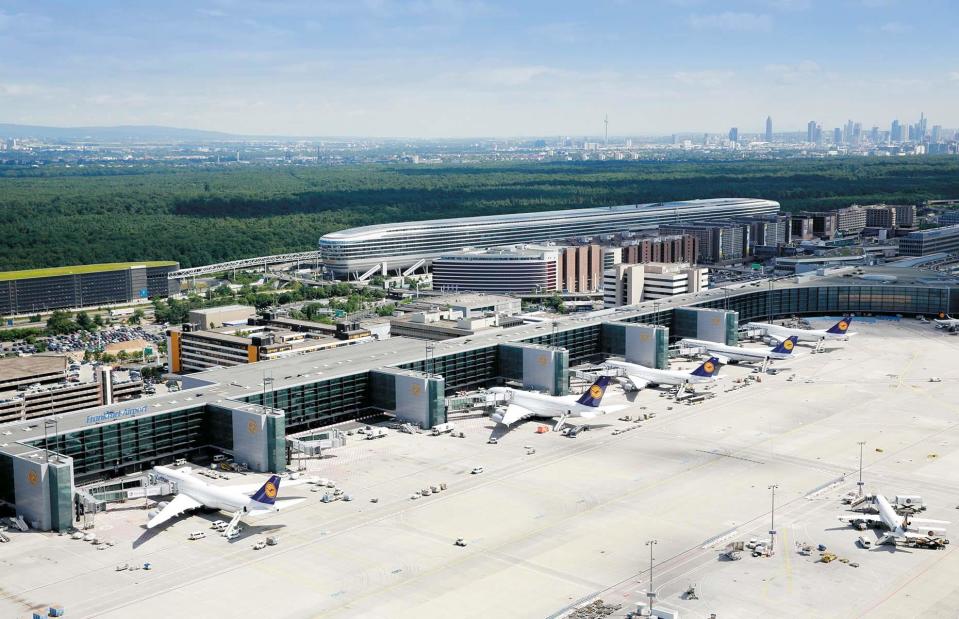
Courtesy of Fraport AG
Following years of renovations and improvements, including new runways and terminals, Frankfurt Airport is now served by 86 airlines, reaching 292 destinations in 92 countries. Today, Frankfurt Airport is Germany’s largest airport and one of Europe’s most important hubs, with nearly 50 million passengers travelling through the airport in 2022. An estimated 148,450 travellers depart or arrive each day, although the busiest ever day was on 30 June 2019, when 241,228 people passed through.
Dubai International Airport, UAE
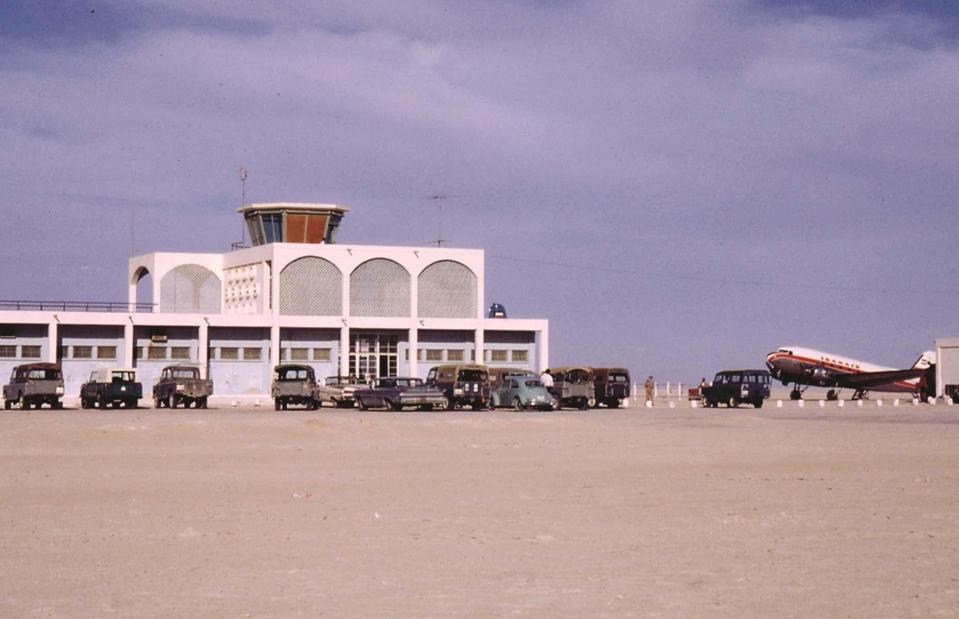
Courtesy of Dubai Airports
A major international hub and one of the world’s busiest airports, Dubai International Airport (DXB) has expanded rapidly over its relatively short history, with passenger numbers growing by an average of 13% each year. Although DXB's history can be traced back to 1937 – when the British airline Imperial Airways operated four weekly Flying Boats here – the airport properly opened in 1960 (pictured). By 1963, its first expansion had already commenced, as the airport swapped its sand runway for modern asphalt tarmac.
Dubai International Airport, UAE
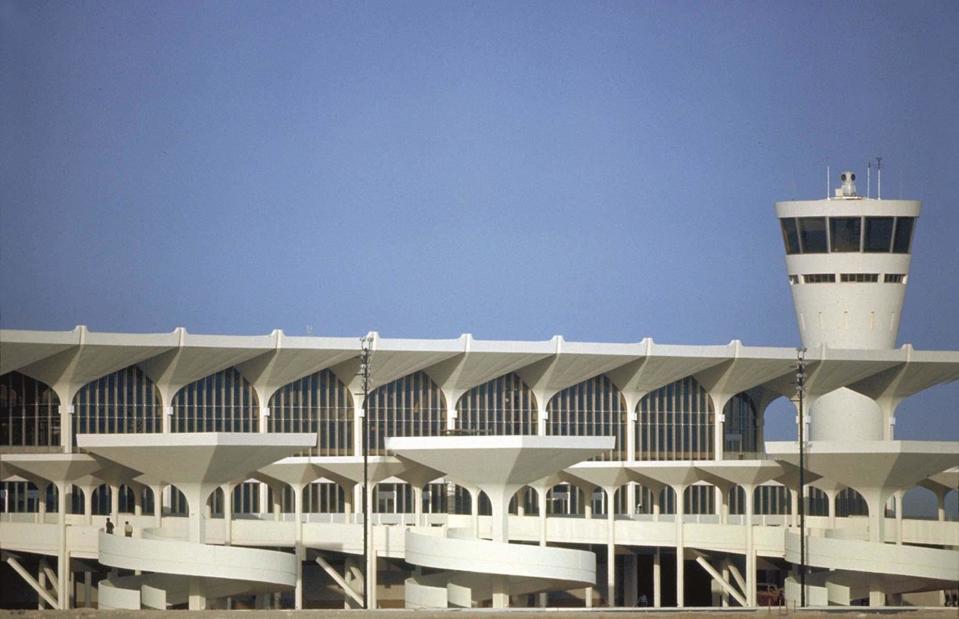
Courtesy of Dubai Airports
By the end of the 1960s, the airport already accommodated nine airlines and flew to 20 destinations. In the 1970s, even grander expansions took place, with the launching of new terminal buildings and a new control tower (pictured). The airport has continued growing since the 1990s: terminals have been added and expanded and the airport has been connected to central Dubai via metro. A second airport, Al Maktoum International Airport (DWC), has also been constructed to support growing passenger numbers.
Dubai International Airport, UAE
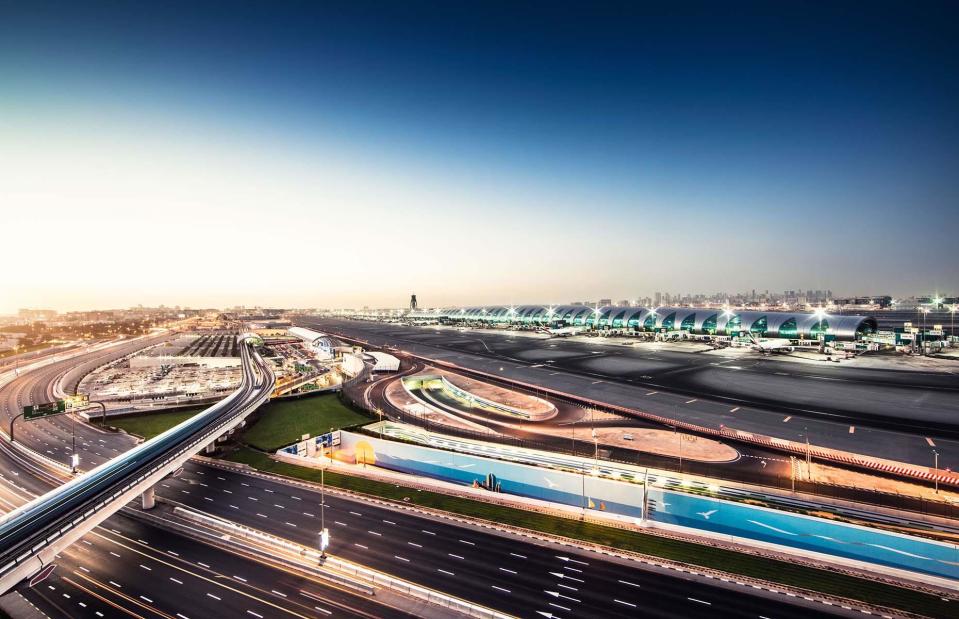
Courtesy of Dubai Airports
The airport now offers flights to 260 destinations on six continents with more than a hundred airlines, making it the world’s busiest airport for international passengers and serving 87 million travellers in 2023. It's also pushing the boundaries for the future with its new Smart Gates, which were introduced in 2023, which mean pre-screened passengers can skip scanning their passport or queuing up at security, with biometric face-recognition systems and smart luggage scanners making for a speedier airport experience.
JFK International Airport, New York, USA
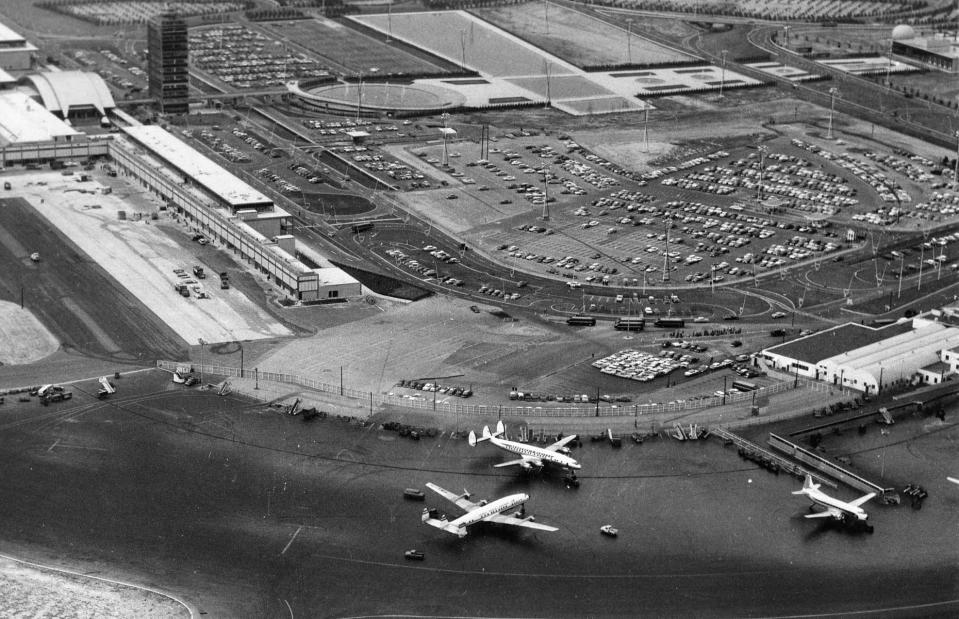
United States Information Agency/PhotoQuest/Getty Images
One of the world’s most famous airports, JFK actually began its life as a golf course. In 1941, the Idlewild Beach Golf Course was chosen to be the site of a new airport serving New York City. The project was a hefty undertaking and it eventually opened as Idlewild Airport, with the first flight taking off in 1948. It was renamed multiple times over the following years and got its current title in 1963, shortly after the assassination of President John F. Kennedy. Here, the airport is pictured in 1957 after the completion of the International Arrivals Building.
JFK International Airport, New York, USA

Allan Tannenbaum/Getty Images
During the 1950s and 1960s, JFK experienced a boom, with airlines including United, American and Pan Am all opening new terminals. By the late 1950s, around £186 million ($235m) had already been spent on developing the airport and it gained even more international fame in the 1970s as trans-Atlantic supersonic flights aboard the Concorde (pictured) connected JFK with London and Paris. Minor redevelopments and expansions continued until the 1990s – Terminal 1 opened in 1998 and the new Terminal 4 replaced the International Arrivals Building in 2001.
JFK International Airport, New York, USA
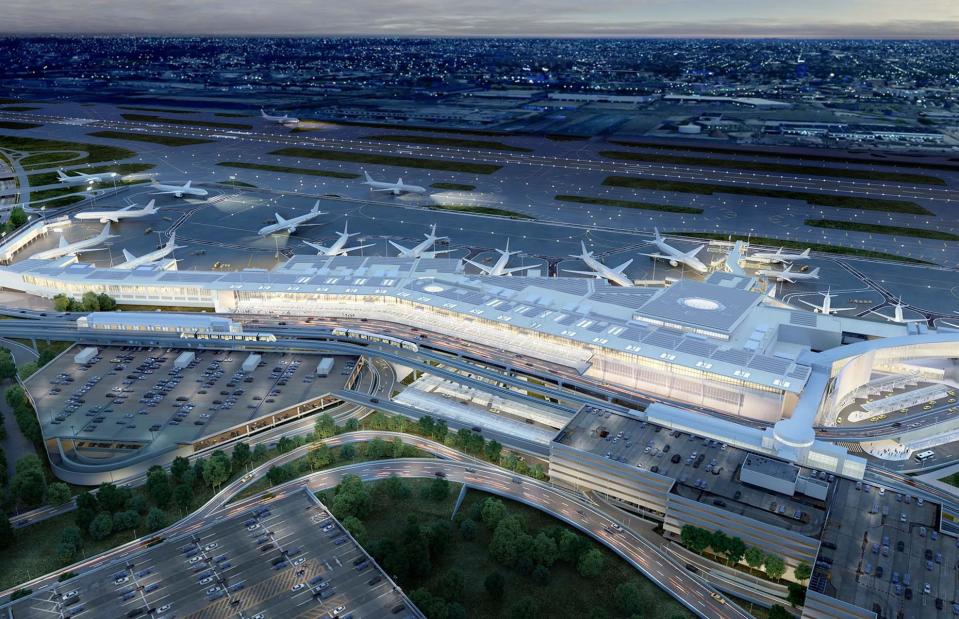
The Port Authority of New York and New Jersey/Flickr
JFK has grown to become one of the world's most famous and important airports, serving 62.5 million passengers in 2023. It's in the midst of a major refurbishment programme worth a staggering £12.3 billion ($15.6bn), with construction under way on a futuristic New Terminal One on the south side of the airport and a new Terminal 6 on the north end, and expanded facilities at Terminals 4 and 8.
Hong Kong International, Hong Kong
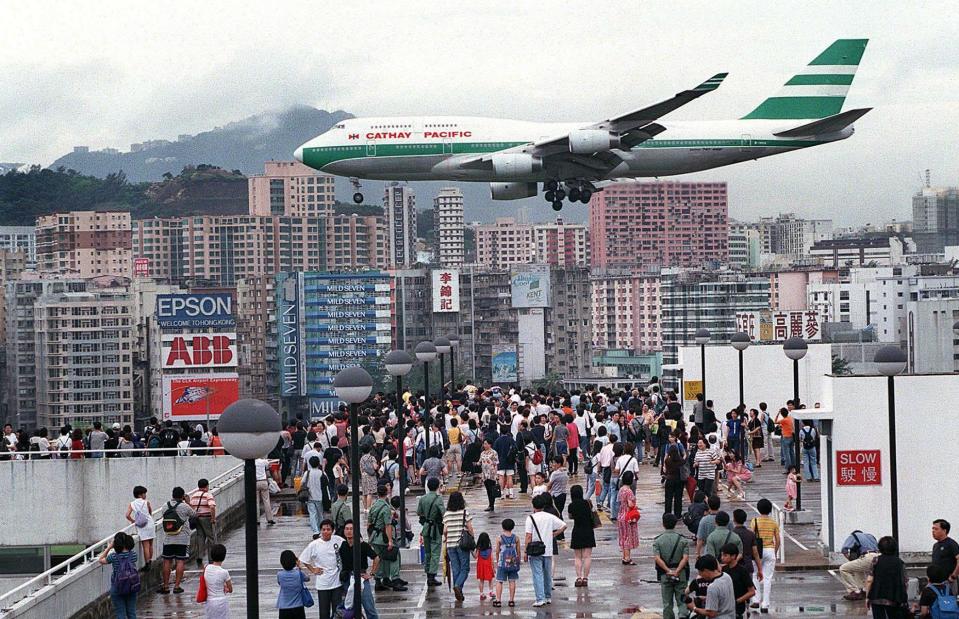
FREDERIC J. BROWN/AFP via Getty Images
Only opened in 1998, island-based Hong Kong International (HKG) came into being as a replacement for the dangerous Kai Tak Airport (pictured). The latter's hair-raising landings were famous among pilots: to land successfully, they had to make a perfectly executed sharp turn to line up with the runway and fly in between Hong Kong’s high-rise buildings. A study in the 1970s identified Chek Lap Kok island as a suitable location for the new airport, but construction didn't begin until 1991.
Hong Kong International, Hong Kong
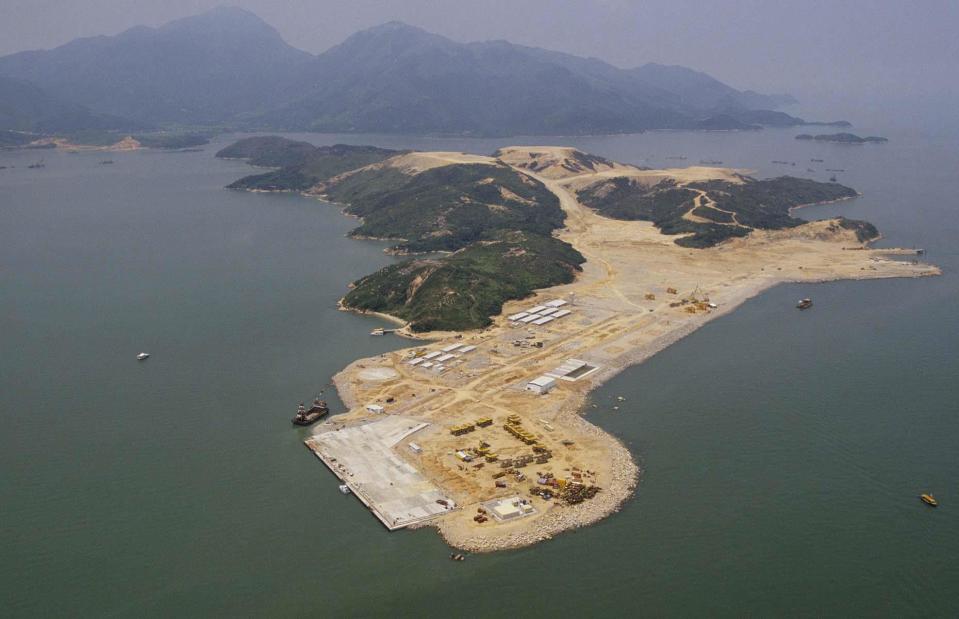
In Pictures Ltd./Corbis via Getty Images
Mere hours after the opening ceremony, Air Force One, carrying President Bill Clinton, landed at the new airport, making him the first foreign visitor to arrive. The airport began its operations a few days later. Another terminal, T2, opened in 2007 to cope with the rising passenger numbers and featured a new shopping mall, called Sky Plaza. Pictured here is the building site of the new airport in 1992.
Hong Kong International, Hong Kong

cozyta/Shutterstock
Covering an impressive area of nearly five square miles (13sqkm), the airport has 90 boarding gates that helped 39.5 million passengers get to around 220 destinations in 2023. The airport is also one of the world's busiest cargo gateways, handling 4.3 million tonnes of cargo and airmail in 2023. The future here is also bright. A 20-year blueprint called Master Plan 2030 was published in 2011, outlining further development that includes construction of a third runway and expansion of the airport facilities.
Singapore Changi Airport, Singapore
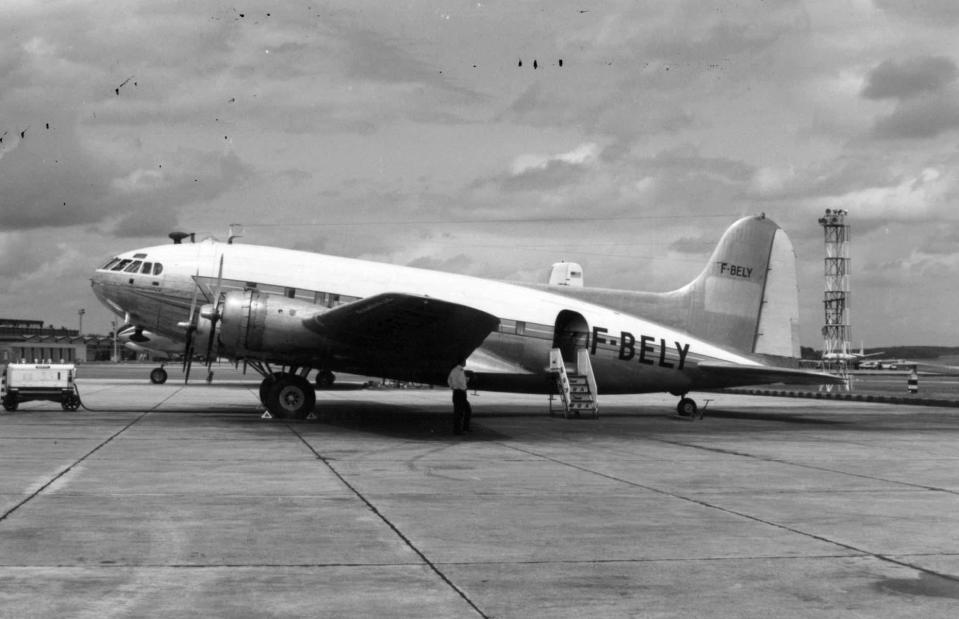
SDASM Archives/CC0/Flickr
Just like Hong Kong, Changi isn't Singapore's first airport. Opened in the 1950s, Paya Lebar Airport served Singapore until 1980, when Changi opened and Paya Lebar was transformed into a military air base. The popularity of international travel meant Paya Lebar had outgrown its home by 1975 so the decision was made to move the airport to a new site, and the foundation stone of Terminal 1 was laid in 1979. Pictured here is Boeing 307 at Paya Lebar Airport in 1967.
Singapore Changi Airport, Singapore
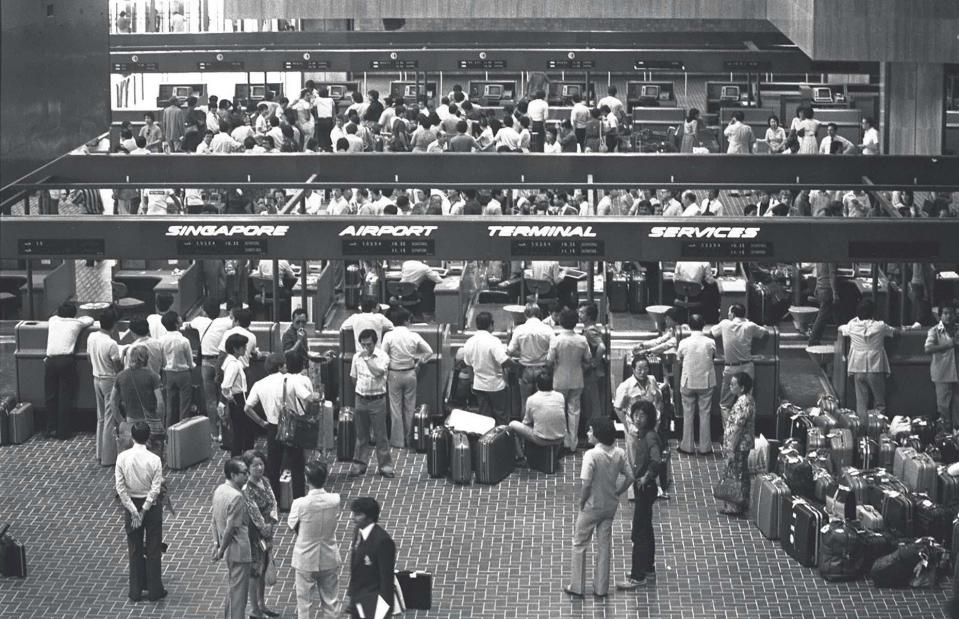
Associated Press/Alamy Stock Photo
Almost immediately after opening, Changi started setting records and world firsts. In the 1980s it was reportedly the first airport to introduce indoor gardens and the first to allow passengers to make free local telephone calls in transit. The world's first transit-area swimming pool opened here in 1995 too. Just five years after the airport's opening, passenger numbers had already surpassed 10 million, so construction on Terminal 2 began. During its first decade, Changi also received its first Best Airport award and is regularly ranked number one in global aviation awards.
Singapore Changi Airport, Singapore

DerekTeo/Shutterstock
The new millennium has brought massive changes to Changi, from new terminals to Jewel Changi Airport, a shopping and entertainment area that connects Terminals 1, 2 and 3. Serving nearly 59 million passengers in 2023, Changi already has several future developments on the way as well. Terminal 5, bigger than the first three combined, is due to open in the mid-2030s and is expected to handle 50 million passengers a year alone.
Hartsfield-Jackson Atlanta International, Georgia, USA
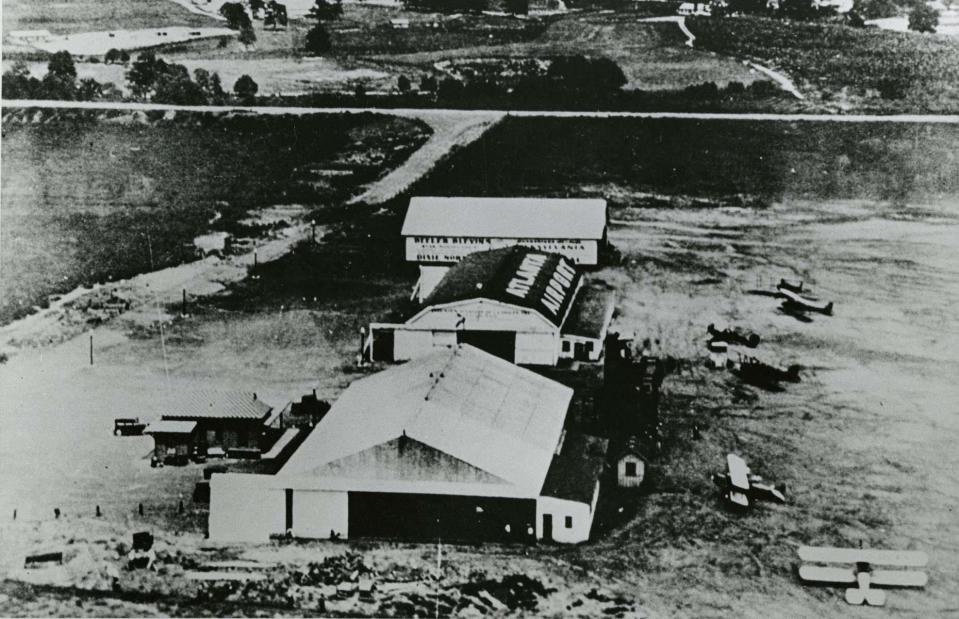
Associated Press/Alamy Stock Photo
One of the world’s busiest airports for international passengers, Hartsfield-Jackson Atlanta (ATL) first came into existence in the 1920s as Candler Field. The first commercial flight took place in 1926 and in 1942 it was renamed Atlanta Municipal Airport. Passenger numbers grew rapidly after the war, so a temporary terminal was built out of salvage material from old military buildings. When it opened, it featured the longest ticket counter in the world. The airport is pictured here in 1927.
Hartsfield-Jackson Atlanta International, Georgia, USA

MidCentArc/CC BY-NC-SA 2.0/Flickr
In anticipation of the passenger numbers the dawn of the Jet Age would bring, the country's largest single terminal opened in 1961 (pictured). Although it was built to serve six million passengers a year, the terminal was already stretched beyond capacity in its first year. Then the largest passenger terminal in the world, Midfield Terminal was opened in 1980 to accommodate up to 55 million passengers a year. A number of further renovations and openings in the 1990s led to it becoming the world's busiest airport by passenger traffic.
Hartsfield-Jackson Atlanta International, Georgia, USA
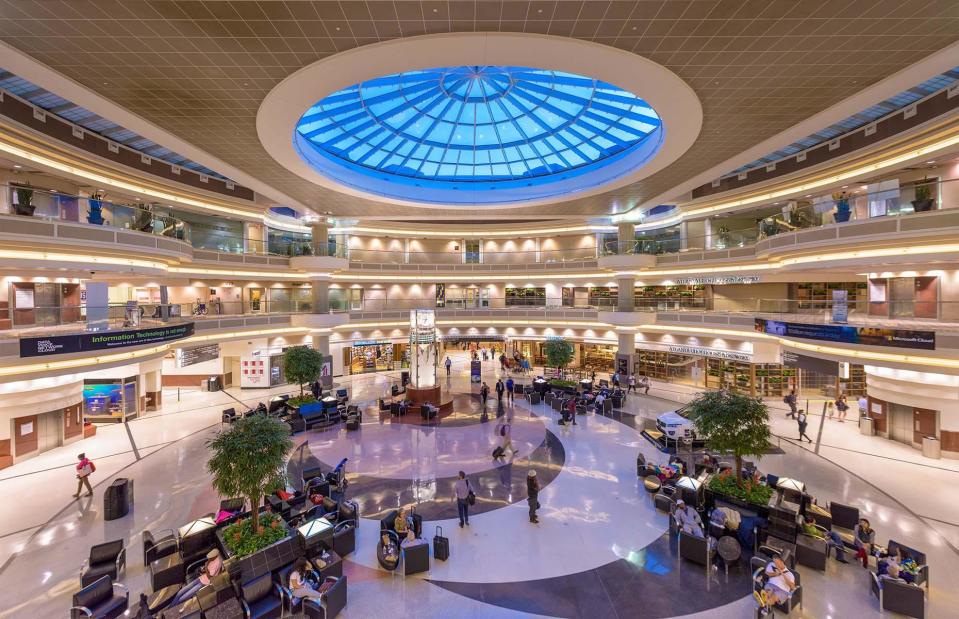
ESB Professional/Shutterstock
Today, Atlanta is one of only three airports in the world to feature five runways, with 104.7 million passengers passing through in 2023, just 5 million shy of its world-beating record in 2019. The airport is within a two-hour flight of 80% of the US population and Delta's biggest hub, which might explain its popularity. Not only is it the state's top employer, but it also holds fun events such as annual charity race, 5k on the 5th runway, with the slogan: 'You've flown over it. You've driven under it. Now run on it.'
Sheremetyevo International Airport, Moscow, Russia

Dean Conger/Corbis via Getty Images
Originally a Soviet military base, Sheremetyevo (SVO) began its life as a civilian airport in 1959, when the first flight landed from Saint Petersburg (then Leningrad). But it wasn't officially opened until 1960. The first international flight took place in the same year to Berlin Schönefeld Airport. In the coming decades, a second runway was constructed, a new terminal opened and another one was commissioned. Pictured is a cafe at the airport in 1975.
Sheremetyevo International Airport, Moscow, Russia
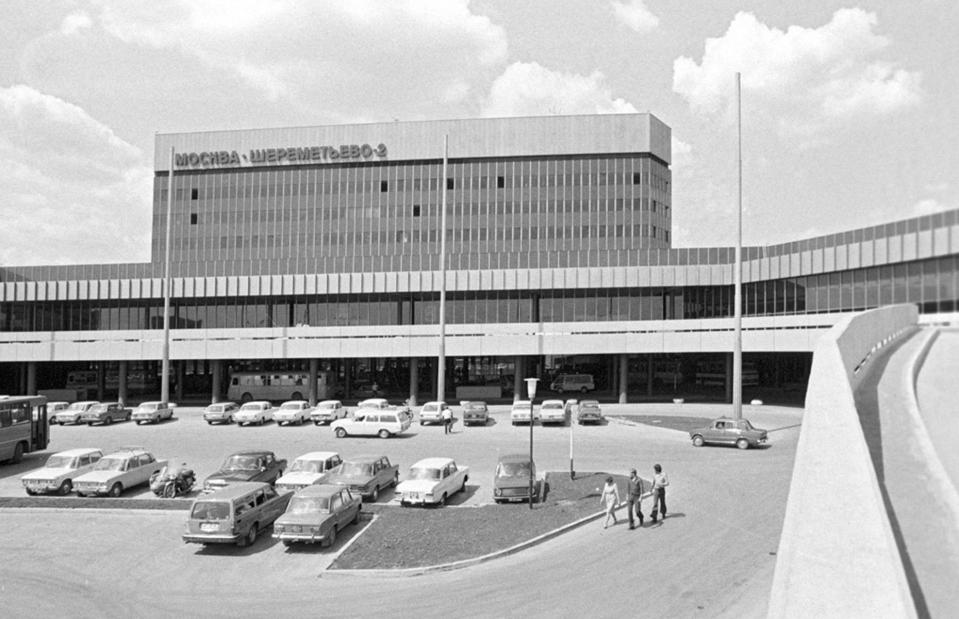
RIA Novosti archive/Vitaliy Arutjunov/CC-BY-SA 3.0/Wikimedia
Sheremetyevo-2 (the second terminal, now known as Terminal F) was opened in 1980 in anticipation of the Olympic Games in Moscow. The complex was designed to serve six million passengers annually, but during the month of the Olympics, the terminal had more than 460,000 foreign passengers passing through. After the fall of the Soviet Union, the airport underwent a number of major redevelopments, including reconstruction of one of the runways, new railway connections and the addition of several new terminals.
Sheremetyevo International Airport, Moscow, Russia
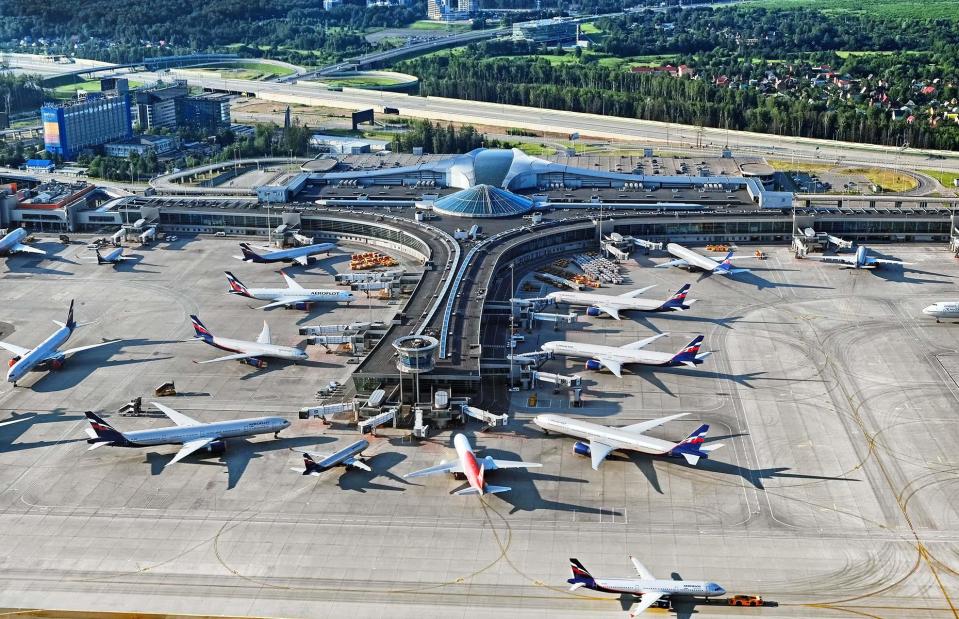
vaalaa/Shutterstock
Today, Russia’s busiest airport comprises six terminals and is the main hub for Russian flag carrier Aeroflot. The airport has also been named the world's best for flights arriving and departing on time, has doubled as a space port on the silver screen, and its transit lounge was home to American-Russian technology specialist Edward Snowden for more than a month in summer 2023. The airport was renamed Sheremetyevo Alexander S. Pushkin International Airport in 2019 to honour the famous Russian poet on his 220th birthday.
Paris Charles de Gaulle Airport, France
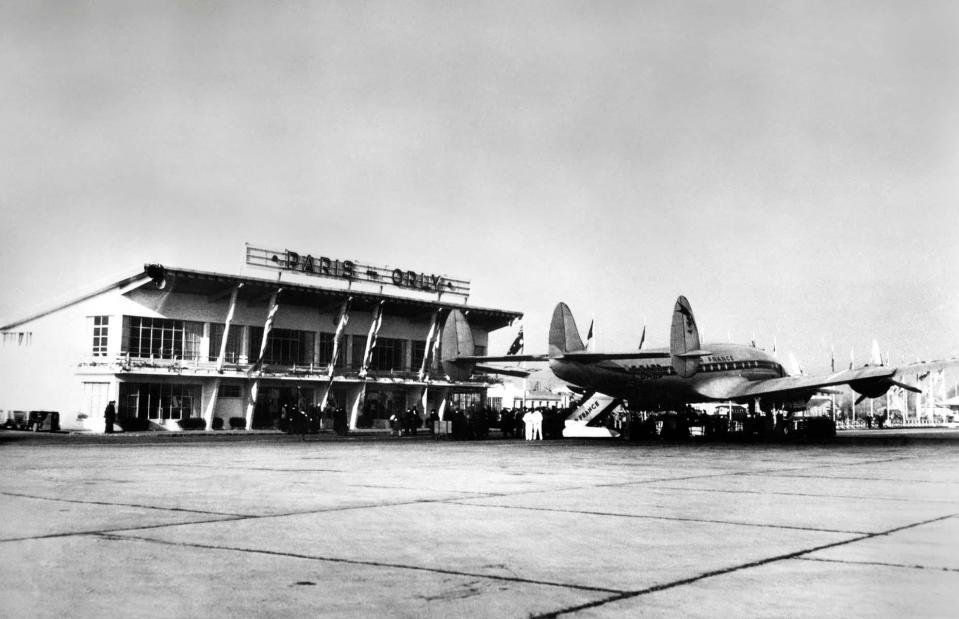
AFP via Getty Images
The title of the oldest airport in France goes to Paris-Le Bourget, which began commercial operations in 1919. But there’s no denying the importance Paris Charles de Gaulle (also known as Roissy or by its IATA code CDG) plays in Europe and the world. Plans for a new airport were drawn up as early as 1966 as Le Bourget and Orly (pictured in 1946) struggled to cope with ever-growing passenger numbers.
Paris Charles de Gaulle Airport, France

STRINGER/AFP via Getty Images
The revolutionary airport – designed as a central cylindrical 10-floor building with seven satellite buildings – opened in 1974. Soon after, the airport welcomed its first commercial flight and all three Paris airports broke the 20 million passenger mark. Several improvements and openings of new terminals followed in the coming decades to cope with the growing numbers of passengers, and it became the French home of supersonic service Concorde.
Paris Charles de Gaulle Airport, France
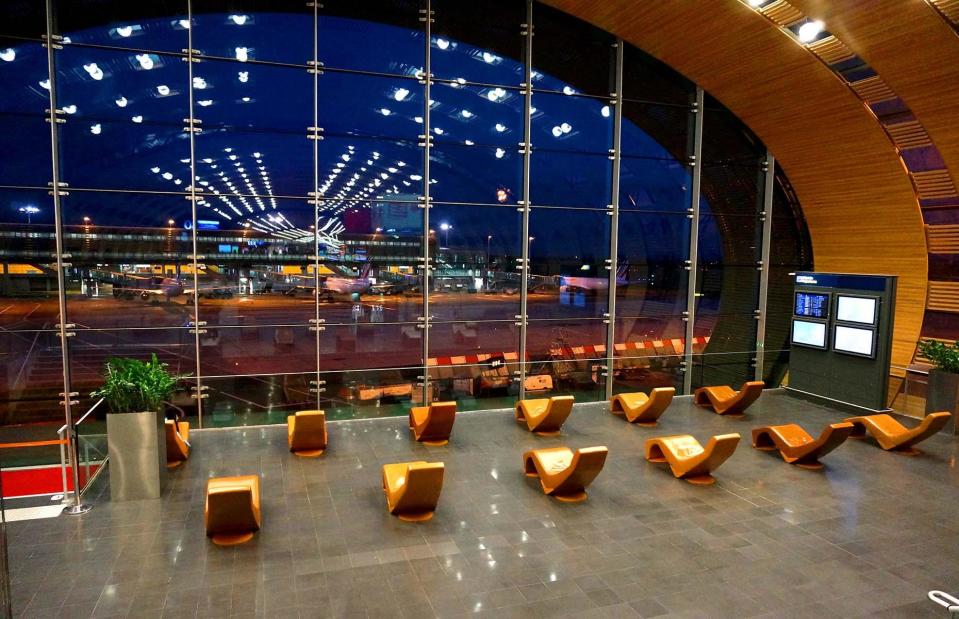
Mila Che/Shutterstock
With flights to 328 destinations in 119 countries, CDG is now a hub for both passengers and cargo. In 2023, the airport served 68.3 million passengers, becoming one of the biggest European hubs for passengers, freight and mail. A peculiar feature of the airport today is its terminals. There are technically three in total, but in reality it feels more like nine with Terminal 2 now housing sub-terminals 2A to 2G. Plans for a new Terminal 4 were scrapped in 2021 following the impact of the pandemic and environmental concerns.
Los Angeles International, California, USA
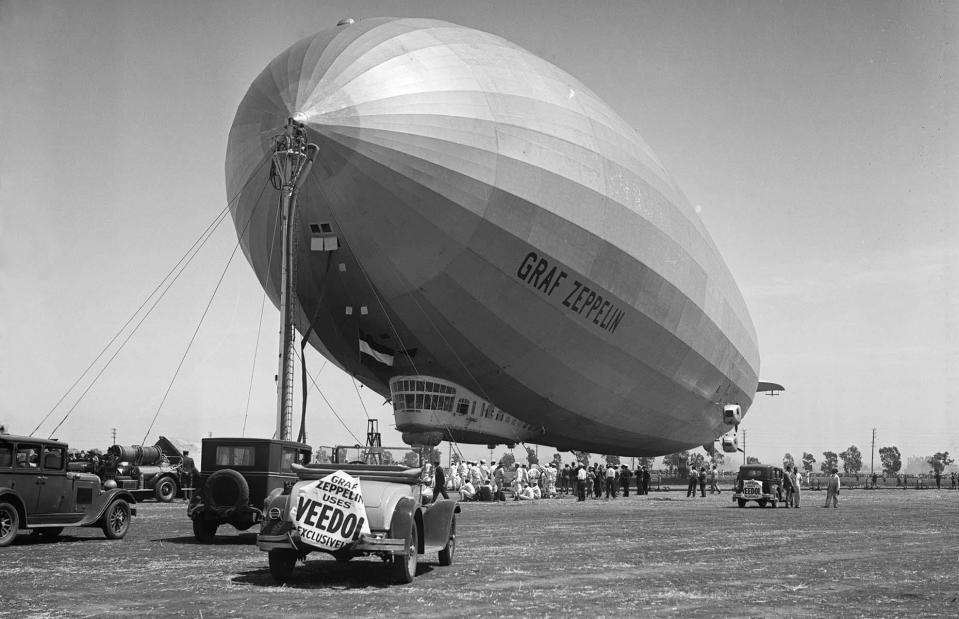
Camerique/Contributor/Getty Images
One of the busiest airports in the USA, Los Angeles International (LAX) was built on land that was once used to grow lima beans, wheat and barley. Then known as Mines Field, LAX began its operations on 1 October 1928 and was later used by the military during the Second World War. Commercial services began in 1946, and instead of the comfortable terminals of the modern day, there were just four simple buildings with a single cafeteria.
Los Angeles International, California, USA

Archive PL/Alamy Stock Photo
Previously known simply as 'LA'. the airport had its iconic 'X' added in 1947 as, due to rapid growth in aviation, airport identifiers expanded to three letters. LAX also gained a notable addition in 1961 that's still one of its most recognisable features. Opened by Vice President Lyndon B. Johnson, the Theme Building (a designated Space Age monument) resembles a UFO that's landed on four legs. At the time it housed a restaurant, but today it's an observation deck.
Los Angeles International, California, USA

Phillip B. Espinasse/Shutterstock
Today, LAX is the world's eighth busiest airport, with nine terminals and a new £1.8 billion ($2.3bn) Delta Sky Way that connects Terminal 3 via moving walkways. The airport banned the sale of plastic water bottles in summer 2023 to boost its sustainability credentials, and also offers a special PUP (Pets Unstressing Passengers) programme that provides stress relief and comfort to passengers with the help of therapy dogs in red 'Pet Me' vests.


